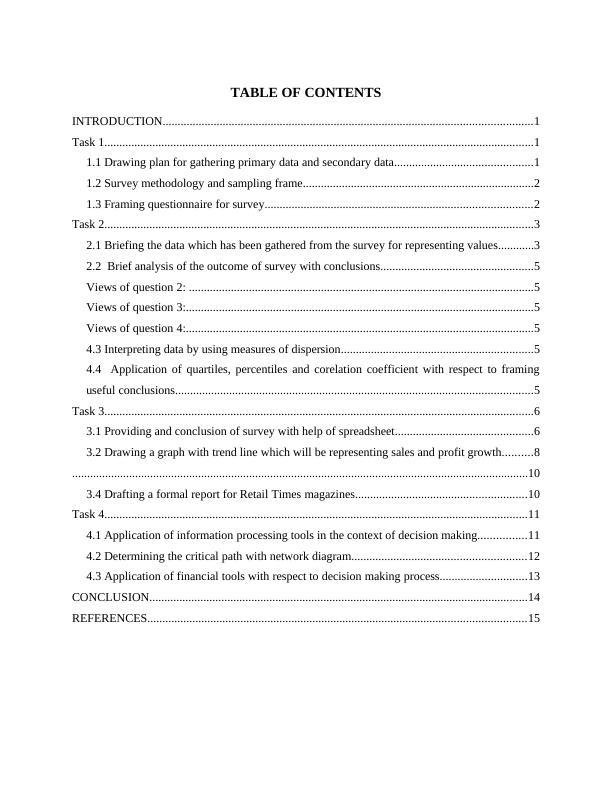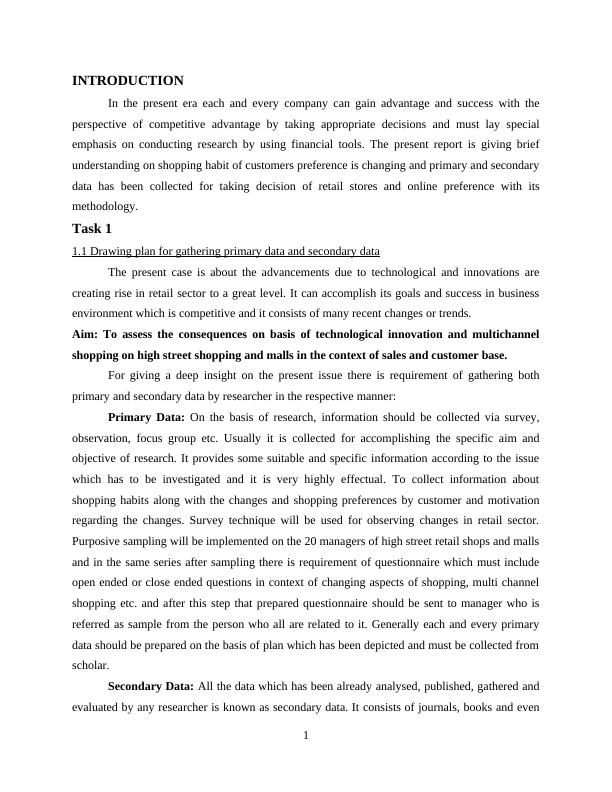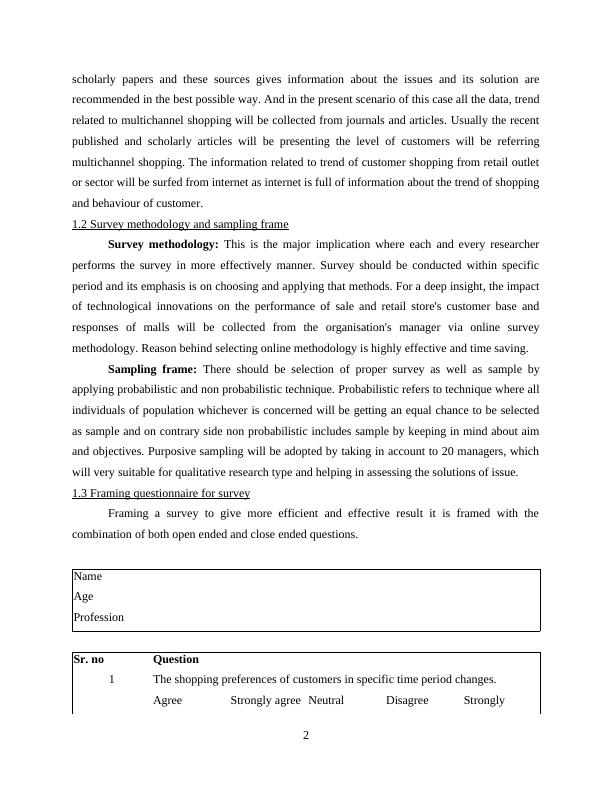Business Decision Making: Gathering Data, Survey Methodology, and Analysis
19 Pages3724 Words59 Views
Added on 2023-02-10
About This Document
This report provides insights into the process of gathering primary and secondary data, survey methodology, and analysis in business decision making. It focuses on the impact of technological innovations on sales and customer base in the retail sector. The report includes a detailed discussion on drawing a plan for gathering primary and secondary data, survey methodology and sampling frame, framing a questionnaire for survey, briefing the data gathered from the survey, and analyzing the outcome of the survey. It also covers the application of measures of dispersion, quartiles, percentiles, and correlation coefficient in framing useful conclusions. The report concludes with a discussion on providing a conclusion of the survey with the help of a spreadsheet and drawing a graph with a trend line representing sales and profit growth.
Business Decision Making: Gathering Data, Survey Methodology, and Analysis
Added on 2023-02-10
ShareRelated Documents
End of preview
Want to access all the pages? Upload your documents or become a member.
(Doc) Business Decision Making Assignment
|24
|4856
|27
Impact of Technological Innovation on Queensgate Shopping Centre
|16
|3507
|21
Report on Impact of Technological Innovations - Queensgate Shopping Centre
|12
|3455
|56
Business Decision Making Contents Introduction 1 TASK 11
|28
|4684
|214
Business Decision Making: Assignment
|24
|4246
|172
[PDF] Business Decision Making Assignment
|16
|3599
|174




